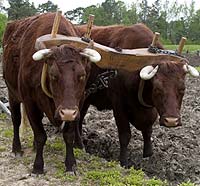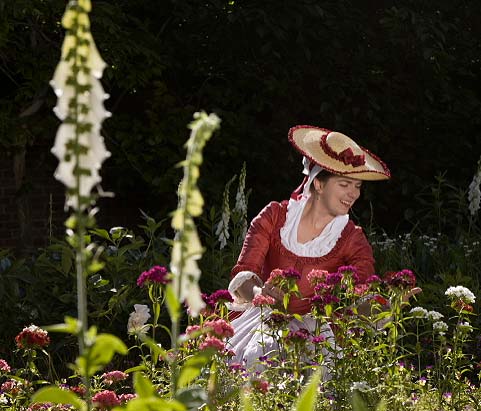 In the early years of colonization, Virginia planters practiced a slash and burn type of agriculture. With a seemingly endless supply of land, they simply exhausted the fields and moved on.
In the early years of colonization, Virginia planters practiced a slash and burn type of agriculture. With a seemingly endless supply of land, they simply exhausted the fields and moved on.
…
Inspiration for the Modern Revolutionary
 Robust, heat-tolerant plants thrive in late summer’s swelter. Crape myrtles (Lagerstroemia indica), the medium sized, multi-stemmed small trees that dot the landscape, are heavy with blossoms in a range of colors from white to pink to purple. Although late 18th-century introductions, no Southern landscape is complete without them.
Robust, heat-tolerant plants thrive in late summer’s swelter. Crape myrtles (Lagerstroemia indica), the medium sized, multi-stemmed small trees that dot the landscape, are heavy with blossoms in a range of colors from white to pink to purple. Although late 18th-century introductions, no Southern landscape is complete without them.
…
 Written documents suggest there were probably few, if any, street trees planted in the colonial capital. Surviving accounts by eighteenth-century visitors contain comments about the sandy, dusty streets that were here at that time (see below). Other comments refer to the ability to see Williamsburg from a great distance, and of the city being situated upon an “open plain.”
Written documents suggest there were probably few, if any, street trees planted in the colonial capital. Surviving accounts by eighteenth-century visitors contain comments about the sandy, dusty streets that were here at that time (see below). Other comments refer to the ability to see Williamsburg from a great distance, and of the city being situated upon an “open plain.”
…

June brings the first onset of really warm temperatures, driving the early flowering trees, shrubs and perennials from the landscape.
…
 Plants in profusion and variety, both native and imported, grow in and around the Historic Area of Williamsburg. To provide the majority of the color in our gardens throughout the seasons, Colonial Williamsburg’s landscape staff and volunteers plant a combination of annuals, biennials and perennials….
Plants in profusion and variety, both native and imported, grow in and around the Historic Area of Williamsburg. To provide the majority of the color in our gardens throughout the seasons, Colonial Williamsburg’s landscape staff and volunteers plant a combination of annuals, biennials and perennials….